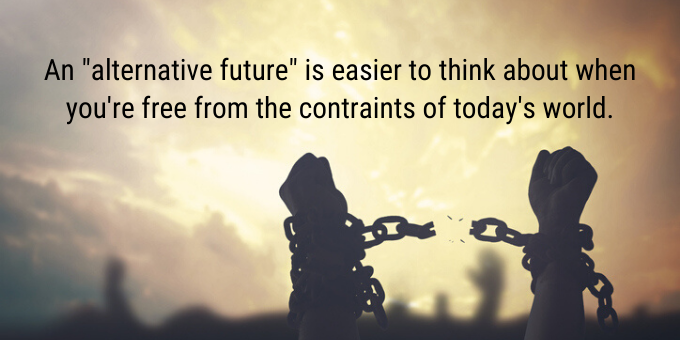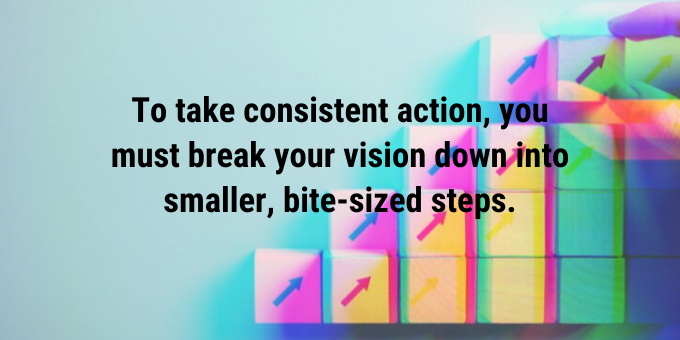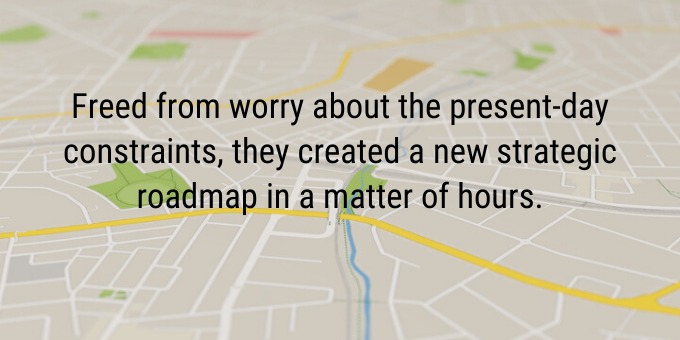
Back to the Present: Kyle Hermans on How Companies Can Innovate for the Future
Huh?
That statement sounds like a piece of advice Professor “Doc” Brown from Back to the Future would pass on to his young prodigy Marty.
But Kyle’s advice isn’t sci-fi. It’s based on the science-backed experience his company, Be Courageous, has derived from helping over 50% of fortune 500 companies and thousands aspiring SMEs and startups achieve “transformative breakthroughs.”

“I’m fascinated with human beings and our relationship with change, and how everyone needs some form of help or support at the point of breakthrough,” he said.
Getting to the point starts with not only looking to the future, but shedding the constraints of the present.
Leave the baggage behind
Companies bring a lot of baggage with them when they think about the future. They think about their current staff, facility, and position in the marketplace. They’re trying to solve for the future, often looking backwards to move forward, their heads firmly in the short-term present.
“That means you’re trying to drag everything from your present state with you as you move forward into an unknown future. It stifles the way we think and restricts our creativity,” Hermans said.
The way to break free of that restrictive thinking is to imagine that future state and the vision you want to achieve, and imagine yourself there, as if it were your current reality.
From there you can look back to the present, and think, “How did we get here?” and begin to plot the steps from your future back to your present. This will guide you on what it will take to move forward.

When you’re free from the constraints of today’s world, this “alternative future” becomes easier to think about. And when you have a clear vision, then you can “move towards it with all your energy.”
Adjusting the mindset, then focusing your energy on taking action
When you shift your mindset from a place of what is not possible to a place of anything is possible, from a place of scarcity to abundance, from a place of mediocrity to high performance, and your energies are fully dedicated toward meeting that big bold vision you are desiring to reach, then it’s a matter of taking action to make sure it happens.
“You can have a meaningful vision and a great strategy, but if you don’t have the right systems and habits in place, to bring it to life, it won’t happen,” he said.
That gap between where you are and where you need to be can often seem so big and unachievable that it may be too intimidating to start.

Or you do start, but give up too early as you experience the first obstacles and challenges. To take consistent action, you must break your vision down into smaller, bite-sized steps.
You must maintain consistency to solving each step and stay 100% committed to the process of achieving your vision. That’s when change happens — when you’ve made the mindset shift, and you can focus your energy on the action plan to close the gaps. That commitment may sound something like this:
“I’m going to get up every day, and I remind myself that I know where I’m going, no matter what obstacle or challenge I face,” he said. “Maintain that I have the right mindset and energy-set necessary to take each step toward achieving this big, impossible goal.”
How does this play out in the real world?
The transition from the conceptual to the concrete is difficult, but it never happens unless the proper mindset is in place. Kyle shared two examples of what a mindset-shift looks like in the real world.
1. Giving Yourself Permission to Play
Be Courageous led a number of companies representing the future of finance through a group brainstorming session. Executives were looking for ways to pool their assets in a way that would allow them to break through current regulatory environments to provide their global clients with more real-time value based on current market conditions.

The group was given “permission to play;” by expanding their mindset and removing the current set of regulatory criteria to really challenge the current way of doing things. Freed from worry about the present-day constraints, they created a new strategic roadmap in a matter of hours.
2. Shifting Your Internal Mindset
In another example, Be Courageous was working with a large utility group whose goal was to improve employee and customer safety. The company, however, had deeply ingrained rituals and routines, and a cultural shift would not come easy.
Be Courageous probed to find out what was causing a breakdown in safety compliance. They discovered that the underlying psychology was that people were more publicly compliant than privately compliant, meaning they do the right thing when others are watching them, and often do not do the right thing when no one is watching them.
This prompted a mindset shift to change the “role model motivational drivers.” The company would need to follow the safety standards all the time. “If you do the right thing when no one is watching, you set yourself up for long-term success,” Kyle said.
How can manufacturers achieve a more innovative mindset?
Manufacturers are under tremendous pressure to improve their speed to market while also maintaining quality and safety standards. How do you strike a balance between these two opposing forces?
Kyle points toward a more compartmentalized approach. For your current business, look at ways you can continue to self-improve, based on internal and external feedback. Create a strategic pipeline to move from ideas to implementation.
Then give yourself “permission to play” and think about the future. Disrupt yourself. “Keep pushing to find a way to put yourself out of business,” Kyle says.
Find the way to disrupt your own business, before someone else does. Technology can help you innovate virtually. Simulate and start testing in virtual environments so you can create predictive models.
“Get really comfortable with the unknown,” Kyle said. “Build a muscle of disruption.”
KYLE HERMANS, BE COURAGEOUS“Build a muscle of disruption.”
Just how much are we being disrupted by COVID-19?
Kyle cautions against overreacting with the disruption being caused by COVID-19. It’s important, whether it’s a pandemic or a seismic shift within your own vertical, to distinguish an event from a trend.
“Our first inclination is to panic,” he said. “This is an event, not a trend.”
He recommends keeping your eye on your mission and what your customers need. Be flexible in terms of adding more dimensions of services or some temporary pricing changes, but don’t change who you are.
Your mindset needs to focus on innovations that are designed for the future state you’ve imagined. And especially in today’s environment, you’ll be required to be courageous. As Kyle’s website notes:
“Courage is not the absence of fear, but rather the decision that something else is more than fear.”
OVERCOME YOUR BIGGEST CONVERTING AND PACKAGING CHALLENGES
Published on May 06 2020
Categories: Delta ModTech Blog


